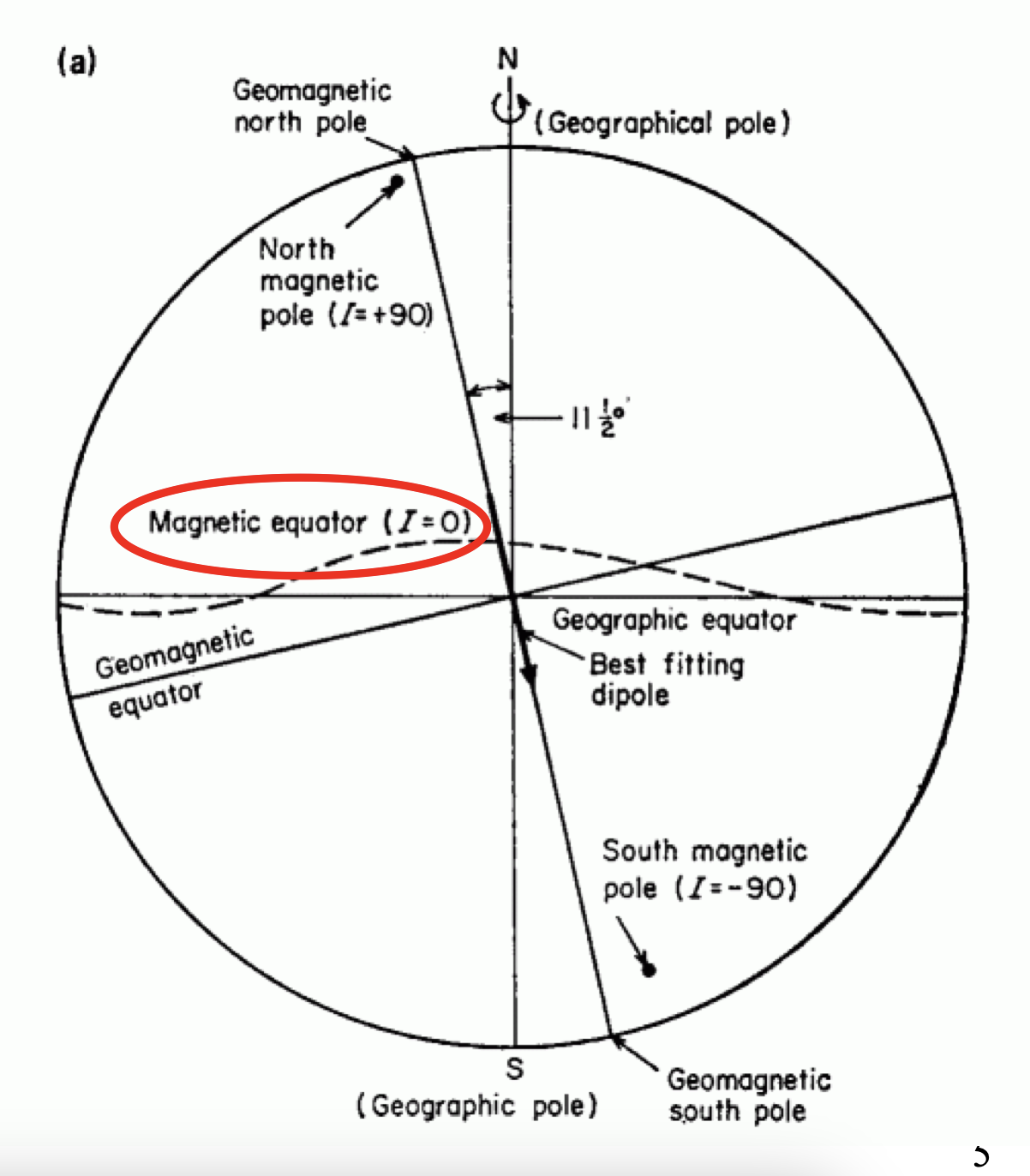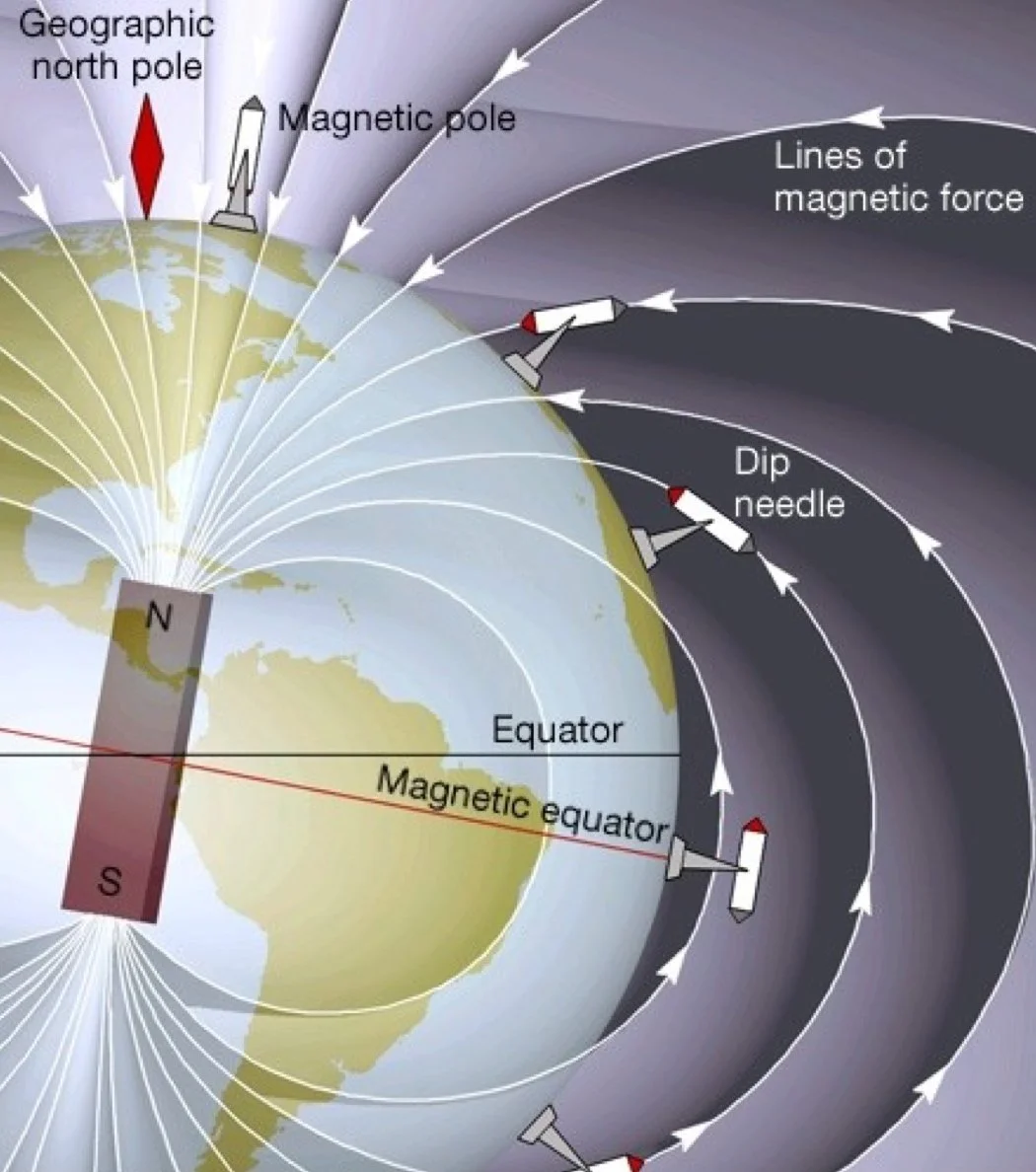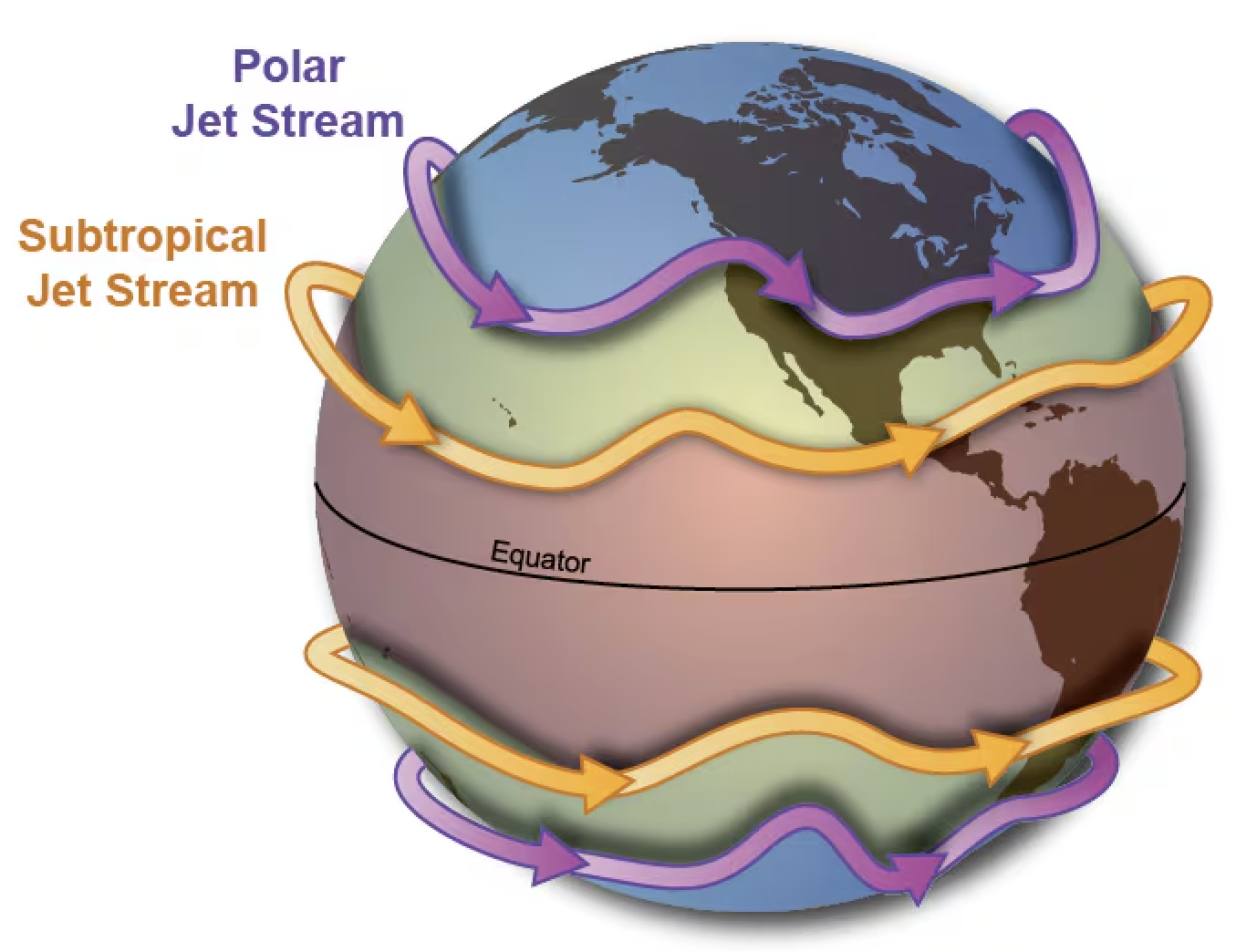C H A P T E R
N ° 27
The Aviation Industry
An industry within the top five most at risk from space weather impact is the aviation industry. The aviation industry has been subject to space weather impact numerous times with significant economic losses. Space Weather is, therefore, a recognized natural hazard within this critical infrastructure.
In today’s article, we will be introducing and looking closer at the relation between space weather and the aviation industry. Moreover, we will explore how space weather interacts with the natural planetary defence systems of Earth and their connection to the potential space weather effects on the aviation industry. Additionally, we will investigate how the interdependency between certain critical infrastructures increases the vulnerability and, thus, risks to space weather impact. Lastly, we will discuss some of the risks and effects experienced by the industry from space weather impact.
Space Weather
Most weather on Earth is ultimately driven by the Sun. Everything from wind to rain patterns are created from the way the Sun heats different parts of the planet. Earth’s weather is a result of interactions between the Earth’s atmosphere and the Sun, and involves atmospheric conditions like temperature, humidity, and air pressure.
Similarly, space weather originates from the Sun in the form of fluctuations in the emission of solar radiation. Like terrestrial weather, the Sun has its own continuous occurrence of weather created by different type of activities happening on the Sun. We, therefore, see activities happening on the Sun all the time. However, ‘space weather’ is a natural hazard comprising a wide range of phenomena created by these activities. In contrasts to terrestrial weather, Space Weather is, therefore, the conditions in space caused by the Sun’s activities that can affect the Earth’s magnetosphere and upper atmosphere.
There are multiple solar activities that can cause space weather: High-Speed Solar Wind Streams (HSS), Solar Flares, Coronal Mass Ejections (CMEs), and Solar Energetic Particles (SEPs). These solar activities can create different types of phenomena such as; solar radiation storms, geomagnetic storms, and radio blackouts, consequently causing multiple effects on Earth and the near-Earth space environment.
* To learn more about space weather, please read: C H A P T E R N ° 1. *
The Earth’s magnetosphere
The Earth has a global dipole magnetic field. This magnetic field structure refers to a magnetic field that has two poles; a north and a south pole, similar to a bar magnet. A global dipole magnetic field effectively deflects most high energy particles.
The poles of the magnetic field surrounding Earth are, however, not the same as the geographical poles. We, therefore, call the poles of the magnetic field of Earth; ‘the geomagnetic poles’. Furthermore, the magnetosphere of Earth is not a true dipolar on its surface nor in space due to small deviations and complexities in the field. These deviations are caused by changes in the Earth’s interior and crust, and the constant bombardment of solar particles from the solar wind.
Image Credit: Unknown: Illustration showing the geomagnetic and geographic poles of Earth.
The changes in the Earth’s interior and crust causes localized variations in its planetary magnetic field, whereas the solar wind distorts the field lines of the Earth’s magnetic field. The solar wind is a continues occurrence of plasma (containing charged particles) emitted from the Sun into the outer space environment. These small deviations cause the internal magnetic field of Earth to have a depression centered over the South Atlantic region (‘South Atlantic Anomaly’), causing its magnetosphere to be the weakest at its equator and the strongest at its geographical poles.
Furthermore, the magnetic field strength of a global dipole magnetic field decreases with increasing distance to the planet. Due to this, there is a difference between the type and intensity level of radiation an object can be exposed to depending on its location (e.g., on the ground compared to in air, or within the near-Earth space environment).
Despite this, the Earth’s global dipole magnetic field has a significantly high magnetic field strength, enabling a dense atmosphere and the creation of its unique atmospheric layers. This combination gives the magnetosphere of Earth the ability to deflect most incoming particles, such as solar particles carried out by the solar wind. The combination of a strong dipolar magnetic field and Earth’s atmosphere enables the protection from most space radiation, and traps heat, helping the enablement of life on the planet. Without Earth’s magnetic field, the planet would not have such a dense atmosphere and would simply deteriorate with time, due to the constant bombardment of the solar wind.
* To learn more about the radiation belts and satellites, please read: C H A P T E R N ° 6 & 11. *
The atmosphere of Earth
The Earth’s global dipole magnetic field allows the planet to have several atmospheric layers: the troposphere, stratosphere, mesosphere, thermosphere, and exosphere. Each of these atmospheric layers interact with incoming space radiation differently.
Most aeroplanes operate within the stratosphere and troposphere. However, in order to understand the interaction between space weather and these atmospheric layers, we first have to understand what happens in the atmospheric layers further above. More specifically within the thermosphere and ionosphere.
The thermosphere and ionosphere:
The thermosphere is located as the second-to-last atmospheric layer. Within this atmospheric layer is the ionosphere. The processes within these two layers are highly dependent on the activities happening on the Sun. Under normal circumstances (i.e., when there is no space weather impact) the ionosphere region is able to absorb UV, X-ray, and cosmic rays. However, during severe and extreme Earth-directed solar activities the density of the ionosphere can change and become more thick. With a ticker ionosphere, the region is able to bend the path of radio waves or scatter them completely, consequently causing things such as loss of Global Positioning System (GPS) signal or communication.
In addition, the increase in atmospheric density, increases the risk of atmospheric drag. This means that there is a higher likelihood and potential of satellites re-entering the Earth, either burning up in the atmosphere or landing on terrestrial (ground) infrastructure. Furthermore, the thermosphere and ionosphere are exposed to ionizing radiation and are able to conduct electrical currents, which gets intensified during space weather events such as geomagnetic storms. This creates issues for things like telecommunication and the Global Positioning System (GPS).
The thermosphere and ionosphere are important atmospheric layers for a society’s technological systems and safety, and determines what will happen in the atmospheric layers following. The conditions experienced in the stratosphere and troposphere are, thus, dependent on the conditions within the thermosphere and ionosphere.
The stratosphere:
The stratosphere is the atmospheric layer one step above the troposphere. It spans from and altitude of approximately 6-20 km to 50 km above Earth’s surface. This layer absorbs a portion of the incoming radiation from the Sun, preventing it from reaching the planet’s surface. The stratosphere, thus, has the ability to absorb the portion of UV-light named ‘UVB’. UVB is a kind of ultraviolet light originating from the Sun and sun lamps. This ability is important to reduce the risk of things such as skin cancer.
The troposphere:
In contrast to the thermosphere and ionosphere, the troposphere is at an altitude of approximately 10-15 km above Earth. It is the Earth’s first atmospheric layer and the place we live and breathe. At the top of the troposphere before the stratosphere is the ‘tropopause’. It is above this region, we find aeroplanes. Between the tropopause and the stratosphere is where most aviation is located due to the jet streams. Jet streams are relatively narrow bands of strong wind (see illustration further below).
During times when there are little to no Earth-directed solar activities, or when the Earth-directed solar activity is weak, no consequences can be felt within the troposphere. However, during space weather events causing things such as strong, severe, or extreme geomagnetic storms, solar particles have the potential to reach the troposphere. When it does, it increases the risk of radiation exposure to the exterior and interior of aeroplanes flying transatlantic routes or at higher altitudes.
* To learn more about the Earth’s atmospheric layers and space weather, please read: C H A P T E R N ° 13. *
Satellites
Most critical terrestrial (ground-based) infrastructure is (in)directly dependent on satellites to function. Likewise, satellites dependent on the energy sector - which is a critical terrestrial infrastructure – in order for control centres based on Earth to manage their satellites. This interdependency increases the vulnerability to space weather impact within the overall category of Critical Infrastructure (CI).
Satellites have shown to be the most at risk of impact from space weather. Yet, the aviation industry heavily relies on satellites such as the Global Navigation Satellite System (GNSS) - Global Positioning System (GPS) being part of that -, and Telecommunication Satellites. This is because satellites are used for things like air traffic control, enabling the control centres on the ground to help pilots navigate the air safely. This helps minimizing the risks of emergencies and disasters.
During space weather events, there is a chance for a rapid increase of the energy level of particles within the near-Earth space environment. This quick acceleration of particles to very high energy levels, increases the intensity level of the radiation that objects in the near-Earth space environment are exposed to. However, space weather does not only increase the energy level of electrically charged particles but, additionally, causes an income of magnetically charged particles. This combination of incoming electrically and magnetically charged particles and the increasement of energy levels of already existing particles in the environment, creates a highly complex and hazardous space radiation environment. Thus, during severe and extreme space weather events, the particles can reach energy levels and a level of complexity to such a degree, that current engineering-based mitigation measures are not always sufficient, consequently leading to impact on the functioning of satellites.
Furthermore, space weather does not only interfere with the satellites themselves. It can, additionally, interfere with the transmission of the data from the satellite to the receivers on Earth. Satellites use a wide range of radio and microwave frequencies to send and receive data. These have to travel through the Earth’s atmosphere. However, during severe and extreme space weather events, parts of the atmosphere can turn into a very hazardous environment for radio and microwaves, and can cause complete blockage of transmissions.
Momentary blockage of satellite data transmission or noise (errors) in the satellite data can create highly dangerous situations within the aviation industry. Noise within satellite data, or a collapse or momentarily shutdown of communication between ground control centres and pilots would increase the risk of, for example, two aeroplanes or an aeroplane and another object to collide into each other. The is because the ground control centres would not be able to communicate nor guide the pilots through the air traffic. Additionally, the malfunction of the satellites increases the likelihood of issues with the computer system within the aeroplanes. This means, that there is a risk of the data provided by the aeroplane’ system to be filled with errors, making the system unreliable. The uncertainties created during space weather impact, thus increases the risk of emergencies and disasters.
* To learn more about the relation between space weather and the satellite industry, please read: C H A P T E R N ° 7-11. *
The Energy Sector
The type of critical infrastructure that society has become the most reliant on is the energy sector. Power networks play a vital role in everyday life. It can be a standalone critical infrastructure providing electrical power but it can, additionally, be a service provider to other critical infrastructures that rely on electricity from a power grid.
The energy sector has been aware of the impact of space weather on power grid systems for years. However, the modern-day power grid system gets increasingly more dependent on satellites in order to function as efficiently as currently possible.
Many studies have shown that space weather can affect power systems through geomagnetically induced currents (GIC). Geomagnetically induced currents (GIC) are exceedingly low frequency field (i.e., quasi-DC) currents. These can induce electric currents that can get into the power transmission lines and flow to and from the ground through the windings of power transformers. These currents can cause numerous issues when entering a power grid. In extreme cases, effects from space weather can lead to blackouts or complete collapse of power grid systems. An example of such impact has been experienced in Hydro-Québec in Canada. Once a power grid experiences a blackout or complete collapse, it increases the risk of cascading effects (i.e., a ripple effect) leading to impact on industries and sectors dependent on electricity, such as the aviation industry.
* To learn more about the relation between space weather and the energy sector, please read: C H A P T E R N ° 16-18. *
Space Weather and Aviation
The aviation industry is within the top five sectors and industries most at risk from space weather impact. This is because of its heavy reliance on technology and infrastructure that can be disrupted by solar activities. It has been subject to space weather impact numerous times with significant economic losses. In 2005, the total cost of extra fuel used to reroute aeroplanes from polar routes due to space weather amounted to 186 million USD. This was excluding costs to passengers and compensation. Space Weather is, therefore, a recognized natural hazard within this critical infrastructure.
Space weather affects aviation in various ways, for example: the industry relies on satellites to provide services such as high frequency (HF) radio communication to communicate beyond the horizon. High frequency (HF) radio is the primary communication tool used by traffic management and airlines to communicate when aeroplanes are flying in remote areas (polar regions and oceans). This type of communication service enables a signal to be sent out, wherefrom it relies on it to be bounced off of the ionosphere and then get picked up by the receiver from the aircraft or the air traffic controller down on the ground.
However, as discussed earlier, space weather can disrupt the ionosphere. This means, that the signal sent from the pilot or the crewmembers onboard an aeroplane, or the signal sent from the air traffic control room on the ground can either get absorbed or scattered on its journey and, therefore, not get picked up by the receiver. Space weather can, thus, cause a disruption in radio communication.
Loss of high frequency (HF) communications as a primary safety-critical tool for communication is recognized as an issue within the aviation industry. Together with navigation, loss of communication is an issue that is relevant for the safety of pilots, crewmembers, and passengers.
There are several backups and mitigation procedures depending on how flight-critical a system is. However, as technology progresses, flight electronics are becoming smaller, which increases their vulnerability to space weather impact. The advancement of aviation technology and the interdependencies within critical infrastructure increases the risk and vulnerability of space weather impact on not only the aviation industry but likewise on all critical infrastructures. Despite there being certain mitigation measures for this industry, it is not immune. Currently, during severe and extreme space weather events, most aeroplanes are restricted from taking off. This is due to the high risks associated with space weather impact on the aviation systems and procedures.
* Flight-critical refers to aspects of a flight that are essential for safety and must be handled with utmost care. It encompasses critical phases of flight, critical parts of an aircraft, and critical tasks in maintenance, all of which, if compromised, could lead to serious consequences, such as accidents or even fatalities. *
Source
NASA (n.d.): Magnetospheres. https://science.nasa.gov/heliophysics/focus-areas/magnetosphere-ionosphere/
Bonnie J. Buratti (2004): Moon. Encyclopedia of Physical Science and Technology. 3rd addition. pp. 161-172. DOI: https://doi.org/10.1016/B0-12-227410-5/00460-9.
Steven N. Shore (2003): Magnetic Fields in Astrophysics. Encyclopedia of Physical Science and Technology. 3rdaddition. pp. 903-918. DOI: https://doi.org/10.1016/B0-12-227410-5/00392-6
Center For Science Education (UCAR) (n.d.): Earth’s Magnetosphere. https://scied.ucar.edu/learning-zone/sun-space-weather/earth-magnetosphere
Center For Science Education (UCAR) (n.d.): What is the Atmosphere?. https://scied.ucar.edu/learning-zone/atmosphere/what-is-atmosphere
NOA (2023): https://www.noaa.gov/jetstream/global/jet-stream
European Commission (2016): Space weather and critical infrastructures: Finding and Outlook. JRC Science For Policy Report.
European Commission (2024): Space weather effects on transportation systems: A review of current understanding and future outlook. AGU. Volume 22, Issue 12. DOI: https://doi.org/10.1029/2024SW004055
American Meteorological Society (n.d.): Space Weather and Aviation. https://www.ametsoc.org/ams/policy/studies-analysis/space-weather-and-aviation/






